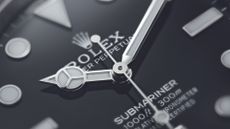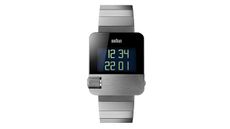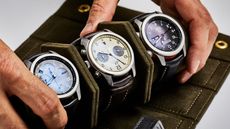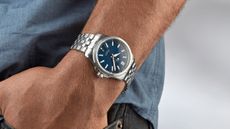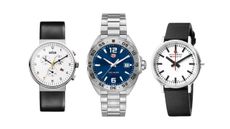Picking out the best watch for yourself, a friend, or a loved one is a daunting task. With so many metrics to define what the best watch for men is, pairing personality to a timepiece proves to be a surprisingly reflective task. Buying for yourself is a lot easier – you already know what you like – but when buying for someone else, there's a delicate tightrope to walk.
Helping you purchase the perfect ‘tick’ to match the lucky recipient's ‘tock’, we’ve scrubbed the internet to find the best watches for men across multiple categories. If you’re willing to splash cash to make it happen, have we got some choices for you! We’ve also looked at all of the best budget options to make your dollars last longer.
Once you’ve found your timely best friend, we’re also looking to give you peace of mind for the watch's lifetime, so check out our best watch rolls and best watch winders to keep the march of time moving forward. If you’re looking to make your watch work for you, we have a guide on the best watches to invest in right now to turn your timepiece into a money bag.
- How to care for your luxury watch according to the experts
- Best dive watch 2023: stylish watches to suit any budget
- The world's most popular watch brand might surprise you
What to know when buying a watch online
Why you can trust T3
The first question when buying a men's watch, especially online, is ‘what do I want this for?’ Once you have a rough idea in mind there are a few ways to answer this question. You want to first consider the budget you have, whether you want brand-name recognition, how tough you need the watch to be or if you're after a particular movement.
Budget: If you’re looking for an easy, carefree, everyday watch, then you don’t want to be splashing thousands of dollars. Brands like Casio, G-Shock and Tissot are where you want to look for decent quality at a (relatively) affordable price. Alternatively, if you’re trying to stand out at a classy formal shindig, a plastic strap just won’t do. The names Hugo Boss, Tag Heuer and Junghans Max Bill are more likely to catch the ear, and eye, of everyone around.
Brand name: There are certain watches that can stop time as well as keep it. Saying “this is a Rolex” tends to have that effect. If you’re looking solely for wow factor, then Breitling and Tag Heuer can do the same. If you’re not fussed with big names, we wouldn't hesitate to recommend any of the brands you see in this article.
Toughness: Watches will let you know if they’re delicate or can handle a bit of a beating. As a general rule, big bulk is your friend for longevity. If you’re planning to get around water, be careful as ‘water resistant’ can be a misleading term. You want to be looking at the following signifiers and what they mean:
3 ATM / 30m: Splashproof and waterproof in small amounts of water
5 ATM / 50m: Can be submerged in water. Suitable for shallow swimming
10 ATM / 100m: Suitable for swimming, snorkelling and water sports
20 ATM / 200m: Ideal for scuba diving
30 ATM / 300m and over: Professional and deep-sea diving
Movement: There are three main ways that watches keep track of time – automatic movement, hand-wound movement (also known as mechanical) or quartz movement. Pick the one that best suits your needs.
Automatic: stores kinetic energy which is powered by the movement of your body
Hand-wound: requires regular winding of the watch crown
Quartz: battery-powered
If you enjoy the mechanical feel of a watch and are interested in the craftsmanship of your timepiece, then automatic and hand-wound are the choices for you. Quartz watches are the ideal companion for someone constantly on the go. Quartz watches, as a generalisation, are going to be that tiny bit more accurate too, as they don't rely on delicate pieces to keep the watch ticking.
The best watches under AU$500
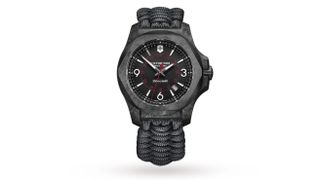

This quartz-powered watch offers excellent resistance to all four classical elements. The Victorinox I.N.O.X can handle water to 200m, fire through high temperatures and rapid temperature changes. It can also take a fair amount of punishment when hitting the earth from heights and will withstand eight tonnes of air pressure. The model we’ve picked out features a genuine American paracord strap for the most rugged of individuals, but you can find multiple iterations of the I.N.O.X to suit all tastes.
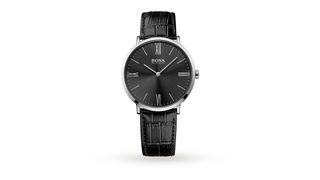

A classic, classy watch with the brand name to match. The Hugo Boss Men’s Jackson is a perfect entry-level watch for someone looking to up their style game without breaking the bank. An understated black clock face features Roman numerals and operates with quartz power – all on a pin buckle black leather strap. And you know this all-black look will go with pretty much any suit you own.
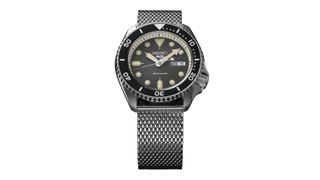

Seiko has spent 50 years building a name synonymous with durability, performance and value. The Seiko 5 pairs this long-standing reputation for excellence with a contemporary look. You’ll also be able to wear this without fear of scratching or damaging as the Seiko Sports range is designed with wear-and-tear in mind – and all this without sacrificing aesthetic appeal.
It features an automatic movement and represents one of the most affordable routes into the world of automatic watches. You can pick the Seiko 5 up in a huge range of styles, from various coloured dials to a multitude of straps.
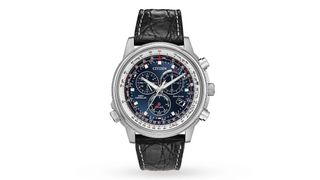

From the name ‘Divers’ you may be able to garner that this is a scuba watch. With that comes a list of expected features that it delivers on in spades. It’s water-resistant to 200 metres, fastens tightly with a one-way rotating slide bezel and has luminous markers for maximum visibility on the dials. Where this watch differs from others like it is through Citizen’s Eco-Drive technology. This automatic chronometer takes its power from any available light source, including artificial light, and has a seven-year power reserve. You’re probably more likely to lose it than for it to stop working on you.
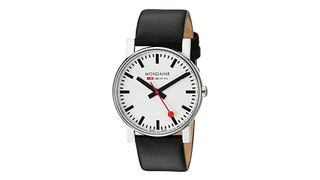

Who said you can't get a Swiss-made watch for under AU$500? And no compromises made either because this affordable Swiss watch is actually attractive as well. Based on the iconic design of the Swiss Railway Station clock, it's easy to read and is stylish. The polished stainless steel case is waterproof to three bar, and the crystal glass covering the face is domed for a magnifying effect.


A canvas strap, lightweight and durable, the Timex Expedition Scout is a simple watch that doesn’t try to be anything too fancy or overcomplicated. Best suited to outdoorsy types and military-minded folk, the Scout’s design was based on the watches worn by the American infantry in the 1960s. This quartz watch is easy to read, even at the dead of night or early morning, thanks to the brilliantly-bright Timex Indiglo night-light.
Best watches over AU$500
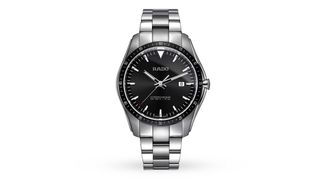

When you want to make a big, loud statement, Rado is there to help. At a high tier of elegance, you’re spending a lot to receive more. The Hyperchrome is based upon the first collection Rado released in 1957. Modernising the timepiece the Classic makes use of cutting-edge technology throughout development, as well as ceramic materials to fit ‘now’. Movement is powered by quartz and the face is protected with an anti-reflective sapphire crystal case.
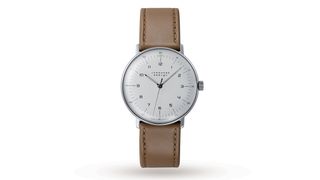

This elegant piece utilises an original design from watchmaker Max Bill, first used in the 1960s. Showing that class is truly timeless, this watch looks as good now as it did then. Underneath the stylish strap and luminous dotted dial face, you have a hand-wound mechanism powering all the hands. The stainless steel dial has a matte silver finish and rests on your wrist with a calfskin leather strap for the most luxurious comfort.
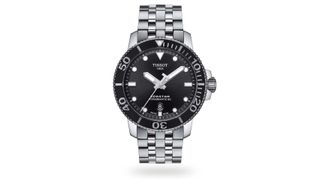

Tissot’s Seastar is a response to the sky-high costs of dive watches from Tudor, Omega or Rolex. Offering a design that stands up to anything offered by those giants in the field, the Tissot Seastar is a gorgeous Swiss diving companion. Water-resistant to 300 metres and powered automatically, you can see the time perfectly in the sea or under the stars. All packaged in a 43mm stainless steel case and matching strap with a unidirectional rotating bezel on the face.
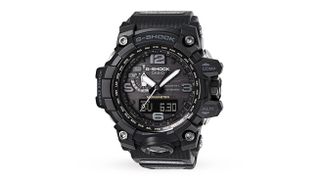

It is impossible to look past the G-Shock when talking about watches. Although the bulky stainless steel case is not to everyone’s taste, you’ll find it garners more compliments than gentle mocking. The unique design sits comfortably on the wrist and in the hearts of its fans. A double LED light on the face and digital clock just under the hands allows for readability in all conditions.
You’ll be able to take this watch anywhere with you as it’s mud- and vibration-resistant, as well as waterproof to 200 metres. With a compass, barometer, altitude and temperature readings all included, this is one of the most feature-rich watches available.





